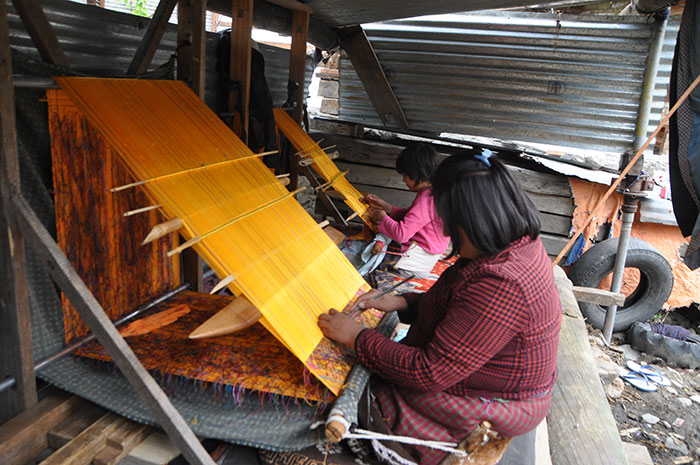Tshering Namgyal | Khoma
Khoma village in Lhuentse, a quiet village otherwise, has suddenly become busy this year. Located on the way to the famous Singye Dzong nye, the increasing number of pilgrims has kept the village on toes.
Since the neykor (pilgrimage) to the holy place began after easing the Covid-19 restrictions, at least over 800 pilgrims visited the nye in a month’s time, according to records maintained by the gewog administration.
Last year, only 400 pilgrims visited the place throughout the entire season that runs from June to November. Without people travelling to Nepal or India for pilgrimage, many are coming to Lhuentse. Khoma tshogpa, Sonam Dargay said the number keeps increasing with groups, big and small, visiting Singye Dzong.
The increasing number of visitors is welcomed by the community, at least from the business angle.
Porter services have been the main source of livelihood for the 14-household community of Tsango and the four-household highlander community of Relmoteng. Usually, each household earns between Nu 60,000 and 100,000 during the pilgrim season, but the increasing number of visitors helped increased their income as well.
Tsango village tshogpa, Shacha Wangchuk said each household owns between eight and 16 horses and their income level also increased. Tsango is a day’s walk from Khoma while Relmoteng is close to Singye Dzong.

Sharing benefits
To ensure no one is left out, the community formed a group and operates on rotational basis.
The night before the reservation, porters descend down to the nearest road point about 5-km away from Khoma, load their horses and start the journey. Singye Dzong is three-day walk from Khoma village and a horse charges Nu 3,500 for a one-way trip.
Former Tsango tshogpa Tobgay said except for cultivating maize, they have no other source of cash income. From the porter and pony services, each household can earn between Nu 125,000 and 150,000 this season.
Khoma gup Sithar Tshering said the gewog planned to form a local operational group who would arrange logistics and food for the increasing visitors with certain fixed charge. However, it could not be implemented after the highland community denied.
Tsango residents said visitors to the nye increased since His Eminence Dzongsar Jamyang Khentse Rinpoche improved the mule track in 2014 .
Homestay and kishuthara business
Although the impact of Covid-19 was most felt by the tourism sector, Khoma vilagers whose major source of income is from homestays and selling the famous kishuthara said local tourists kept their business alive.
“Since the nationwide lockdown was lifted, our facility has been packed for the entire month after the Singye Dzong nye was opened to the visitors,” a homestay owner, Pema Dechen said.
However, Khoma residents said the kishuthara business was the worst hit. “Usually, I sell at least three piece of kishuthara, 20 pieces of table clothes, 30 numbers of mufflers and 20 scarves, but due to the pandemic, except a kira, all other cloth items are stocked up for now,” Tshering Yangki, a regular weaver said.
Facilities
A number of guesthouses are also mushrooming along the way to Singye Dzong to accommodate the increasing visitors. A guesthouse was built in Tsikang, a day’s walk from Khoma, two at Thangkarmo to halt on the second day and around four to five at Singye Dzong area.
Recently, Tarayana foundation with support from the founder and the chairman of American Himalayan Foundation, Richard Blum, constructed a six-quarter structure below the gewog office in Khoma to help the economically backward pilgrims. The free facility can accommodate around 40 people.
Tarayana foundation’s senior field officer in the eastern region, Sonam Jamtsho, said the foundation supported the structure after the Lam of Singye Dzong and local pilgrims who couldn’t afford the homestays requested for a shelter. “Quite often, pilgrims are seen requesting gewog officials to use the gewog facilities,” he said. The guesthouse provides beddings and cooking.


